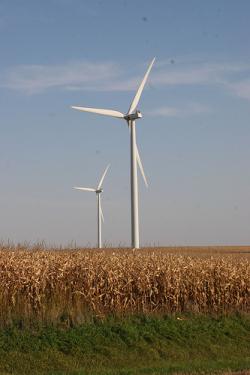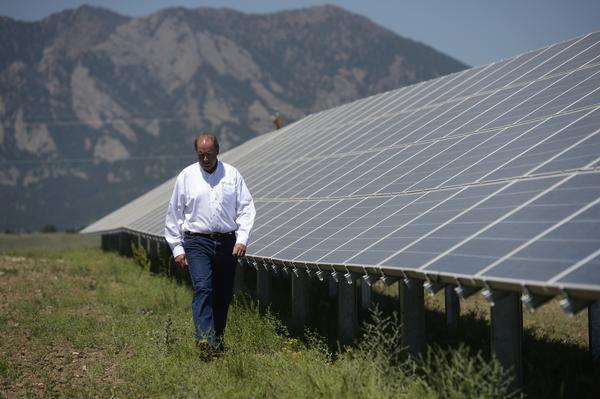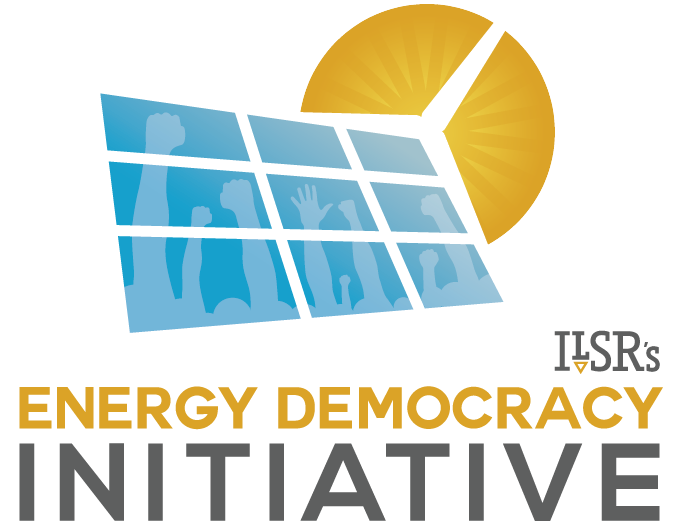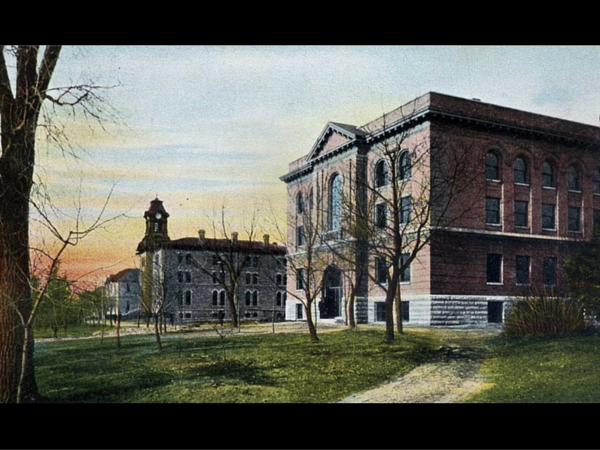 In conjunction with our recently released report: Beyond Sharing – How Communities Can Take Ownership of Renewable Power, we are re-releasing a number of podcasts which feature renewable energy projects with innovative community-owned energy structures. These pertinent podcasts prove that community-owned renewable energy projects are the way to move towards Energy Democracy.
In conjunction with our recently released report: Beyond Sharing – How Communities Can Take Ownership of Renewable Power, we are re-releasing a number of podcasts which feature renewable energy projects with innovative community-owned energy structures. These pertinent podcasts prove that community-owned renewable energy projects are the way to move towards Energy Democracy.
Anya Schoolman from Mount Pleasant Solar Cooperative
From Episode 1 of Local Energy Rules:

What began as a group of neighbors hoping to reduce their impact on global warming has since become a major force for solar advocacy in Washington, DC. The Mount Pleasant Solar Cooperative was started by two teenage boys who wanted to make solar power convenient and affordable through a bulk-purchase program.
Along the way, the cooperatives new members realized that buying power wasn’t enough, and sought out changes in the district’s energy policies. Today the Mount Pleasant Solar Cooperative has helped to get solar panels on over 10 percent of the homes in the Mount Pleasant Neighborhood and has grown into a city-wide political organization.
In December 2012, John Farrell spoke to Anya Schoolman about the growing political role of the Mount Pleasant Solar Cooperative in the larger D.C. area. As Anya explains, their success is attributed to an on-going cycle of project development, organization and policy work, a process that has proven successful since the cooperative started in 2006. Having achieved many of their immediate goals for more affordable community solar–and with a growing network of solar constituents–the cooperative hopes to continue pushing for legislation that will enable solar in greater D.C.
The Community Solar ‘Holy Grail’
From Episode 6 of Local Energy Rules:
John Farrell and Wade Underwood talk with Paul Spencer, President and founder of the Clean Energy Collective (CEC) in Carbondale, CO. The CEC is pioneering the process of delivering clean power-generation through medium-scale (mostly solar) facilities that are collectively owned by participating utility customers. In many ways, their community energy model is the “holy grail” because it has proven replicable in several places around the United States.
“From the outset, we really strived to find something that was going to be widely applicable,” Paul says in the interview.
It’s no easy task. Many other community solar projects have been one-offs, finding ways to work within a particular state or utility regime but unable to bring that model to another community. The Clean Energy Collective did a great deal of research on taxation, incentives, and securities law before they launched several years ago. As a result, the CEC model reaches beyond their start in Colorado to places like New Mexico, Minnesota and Vermont.
600 Investors in South Dakota’s Premier Community Wind Project
From Episode 7 of Local Energy Rules:

John Farrell speaks to Brian Minish, CEO of South Dakota Wind Partners about a community wind project that attracted over 600 local investors. The project was the brainchild of four state organizations rooted in rural South Dakota–the East River Electric Cooperative, South Dakota Farm Bureau, South Dakota Farmers Union and South Dakota Corn Growers. Hoping to broaden ownership in a wind farm project proposed by Basin Electric in Crow Lake, these groups worked with Brian to figure out how to add local investors to the mix.
The project took shape in the shadow of Basin Electric‘s proposed wind farm near Crow Lake, with local farmers and other South Dakotans interested in taking part in the wind project. The result was a community-based carve out of the 100+ megawatt facility: 7 turbines owned by over 600 farmers and local residents. The turbines were constructed as part of the larger wind farm, and the Wind Partners organization contracted with the cooperative electric utility for operations, maintenance, and purchase of the electricity.
Brian Minish helped structure the offer to investors, using the now-expired federal cash grant (in lieu of the Investment Tax Credit) to broaden the opportunity for more local investment. Each of the four organizations kick-started the fundraising with $20,000 and shares were sold in increments of $15,000 to other investors.
A Community Solar Gold Standard
From Episode 9 of Local Energy Rules:

Joy Hughes was living in the San Luis Valley of Colorado, a place with a “tremendous amount of solar potential,” so good that the valley’s residents were being overwhelmed by proposals for large scale solar power plants. One had a “field of things like radar dishes” and another included a “600 foot tower.” The influx of outside companies seeking solar profit led Joy to ask, “Why not just set up solar arrays that can provide power for people in the local community and offset their electric bills?”
The Solar Gardens Institute was born, with a vision of helping community members pool their resources, produce their own energy, and keep their energy dollars local.
One of the Institute’s first initiatives was Colorado’s nascent solar gardens legislation, a national prototype for community shared renewable energy. The bill passed in 2010, and after two years in rulemaking the 9 megawatt (MW) program sold out in 30 minutes. While it was a good framework for encouraging community solar, “it became a contest of who could type as fast as possible,” said Hughes, who felt that the application process (and other aspects) weighted against some of the more authentically community-based projects.
Millions of People Investing in Solar
From Episode 16 of Local Energy Rules:
For years, the only effective way to go solar was to have tens of thousands of dollars and a sunny roof. Investing in solar was nearly impossible. But a couple years ago, a new notion called crowdfunding got its start, and California-Based Mosaic was on the forefront. Its crowdfunding program allows people to pool their resources, large or small, to build community-based solar installations. It’s not about charity, either. Mosaic’s pioneering crowdfunding effort is letting people across the country earn a modest return on their solar investment and putting clean local power on rooftops everywhere.
We spoke with Mosaic president Billy Parish about the potential for crowdfunding to give most Americans a chance to invest in renewable energy.
“We’ve gone through through the very difficult process of getting a lender’s license, getting securities approvals from state and federal regulators to offer our investments…people can make a return on their investment…earning 4.5 to 7.5% annually.”
Many other crowdfunding platforms rely on donations – charitable contributions – to finance local or community-based solar energy projects. The return is mostly emotional or intellectual. Mosaic is changing the game, letting people put their money into solar, and getting them a financial return, too.
Now that you’ve heard from some of the foremost community-owned renewable energy projects in the nation and their leaders, read our report: Beyond Sharing – How Communities Can Take Ownership of Renewable Power.
This article originally posted at ilsr.org. For timely updates, follow John Farrell on Twitter or get the Democratic Energy weekly update.










